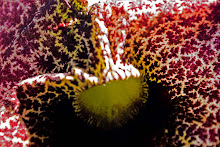In those days death stalked the earth unabated. After the bombs came the plague. It roamed from the skeletal cities to the scorched countryside, casting death like dice among the living. The dead were burnt in great pits in an attempt to stop the spread of the infection. They burnt day and night. Their light reflected from the low cloud sheath that blanketed the earth, bathing the night in orange translucence.
In those days the sick fell dead in waves. The infection would spread through populations multiplying exponentially, then recede for a time. Whene it appeared to be passing, it would swing its scythe again killing by the thousands. By the end of the war most of the cities were totally empty. Those that remained in them formed loose fraternities and tribes. They marked themselves by various means. The ones that the plague didn’t take held on like refugees in a dying world.
In those days it became clear that a few were immune to the sickness. It was not clear how infection spread, weather through blood, or water, or air. But if some people got sick, showed all the signs of death, but recovered, they never feel ill again.
In the beginning the National Guard tried to prevent looting and stop the spread of disorder and infection. The government tried to hang on to a bankrupt system long after it became apparent that it was all falling apart. And yet all the federal ministries finally succumbed to the plague. When most of the people who were in charge of governance died, and the administrative chain broke down, the ones that were left took their remaining wealth and drifted away. There were bomb shelters scattered across the continent, some still sealed perhaps. Most of the top officials tried holding up in secret bunkers in the D.C. area,or at the state capitals but when the plague infected them the residents either died, or left. One could come upon tunnels leading to the opened shelters, secret passage ways under government buildings or in the subways. All the ones that opened to the outside world were ether looted and abandoned or occupied by tribes.
Aron's mother set up a shop in the third floor of an old apartment store in what remained of Beaumont, Texas. Aron and his brother, along with some hired guns, would travel to Houston to loot and trade, bring the goods back, and barter with them. Everyone his immediate family save Aron's dad had survived the plague. Some would count them lucky.
Long before the bombs his uncle suspected a war. He bought land and built a large compound, complete with a bunker 15 feet down. He had co-owned a construction company. He figured out how out build an underground shelter via the internet, retired at 45, and did it.
Aron had no way of knowing how long they stayed in the bunker after the bombing stopped. He had heard that some of the big cities on the East coast were hit by nuclear missiles, but he had no way of knowing. Mostly it had been conventional bombs, which can do almost as much damage if they fall in sufficient numbers. But the war was over fairly quickly. Once the plague set in and spread across the continent, there were not enough people left to fight or command it. The governments quickly fell apart, and the solders deserted. The Bolivarian forces tried to occupy some cities but they died too quickly to get a foot hold. The plague had stopped the bombing, not a peace settlement; it was a much more efficient means of killing.
By the time the Duhon’s emerged most of the soldiers were dead or gone. There was no chain of command, so most of them hunkered down, joined a tribe, and tried to get by the best they could. There was no shortage of food and supplies. All the electricity stopped, but people had gas generators, and there was gas to freeze food and run other electrical gadgets . There was plenty of canned and otherwise preserved goods. When tribes fought they did so over fuel and weapons, or good land on which to settle, or machine parts, or the like. Some areas were safer than others, and one had to travel with armed.
Chad lived in the remains of the Lamar University Library. It was relatively well preserved because it was built like a fortress. A 5 story red brick, concrete and cinder block building with one 5 inch strip of reinforced glass running up each side for windows. They were set about 3 inches into the brick. The university was not bombed for whatever reason, only the nearby petrol plants. The library was basically one big monolith with a few windows. Chad had been a professor and when the bombing started and he held up in the library one day during an air raid, and decided that he would stay. He too was spared by the plague. The neighborhood surrounding the University was almost totally abandoned before long. He would loot the houses in the days following the bombing and help dispose of the dead, carrying them to the pits. People would feed him for his assistance. There was enough dead that he kept busy by day. AS people wandered off or died the surrounding area became slowly deserted and Chad took to growing vegetables in the old soccer field. He shot whatever he could, squirles, rats, possums, birds, ate vegetables and whatever he could loot.
Sunday, September 26, 2010
Subscribe to:
Post Comments (Atom)


No comments:
Post a Comment